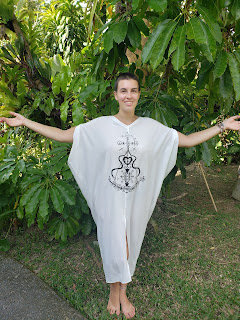What clothes can I wear to help save the planet?
Fashion has an edgy reputation, but it’s pretty conservative about fabric. Cotton still makes up a third of fibre production. The non-organic variety (only 4% of cotton used in fashion is “sustainable”) has a heavy eco burden, using 11% of all pesticides produced. Plus, it takes 20,000 litres of water to produce just 1kg. But most of our closet space goes to synthetic garments, which are derived from oil.
The industry is huge, producing – by my reckoning – more than 80bn new garments a year. We often dump clothes before the first wash. And while initiatives like Greenpeace’s Detox Fashion try to clean up fashion, in pollution terms the fashion industry still comes second only to the oil and gas industry. That’s some rap sheet.
I’m all for wardrobe biodiversity. Look out for pieces fashioned from “green” fibres like salmon leather or rice husks (food-industry byproducts) – 700m tons of rice are harvested worldwide every year, and the husks are being processed into rubber for shoes (M&S uses it in a new Eco Trainer). Meanwhile spoiled milk can be turned into a super-fine fibre that weighs less than wool or silk, and Econyl, a “regenerated” fibre spun from discarded fishing nets, is a sustainable alternative to the oil-derived Nylon 6.
While pulp from cellulosic fibre can be turned into yarn as an alternative to cotton, be on the alert. Canopy (an NGO focused on forest research) reveals that 100m trees are logged each year to be turned into rich dissolving pulp for clothing, 30% from ancient and endangered forests. (Check Canopy for brands committed to sustainable sourcing.) Also, be careful about brands using “eco” bamboo. Check that it was planted on degraded land, not where forest has been converted to a plantation to make a quick fashion buck.
The giant fashion brands suggest that recycling can neutralise fast fashion and have set up schemes for dropping discards off in-store. If that’s true I’ll eat my corn husk hat (possibly edible in any case). In reality turning your discarded jumpsuit into someone else’s sun dress is a technical headache some way off being fixed. Plus, it would be easier if we stuck to the same old fibres – at the moment 70% of our clothes are a cotton and polyester blend. Recyclers don’t enjoy mixing it up – fish leathers and milk silk will complicate things.
If you’re not going to go down the recycling route, you need to commit to treating “greener” pieces sustainably – that means wearing them for the long term and not being addicted to the latest micro trend. So be honest about what sort of consumer you are, and cut your cloth accordingly.


Comments